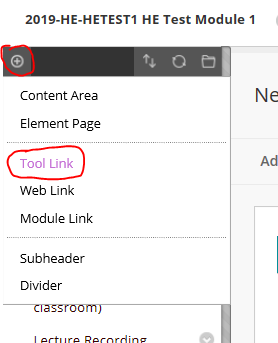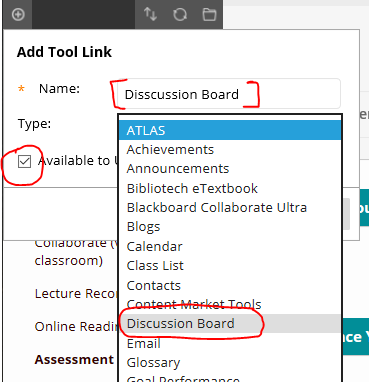What is Discussion Board?
A discussion board is an online tool that allows groups to communicate asynchronously. A discussion board is made up of forums, which are folders containing messages on a particular subject. Forums contain threads. Threads are a series of messages relating to a particular question or topic. Each individual contribution to a conversation is called a message.
Discussions are a good way to encourage students to think critically about your coursework and interact with each others’ ideas. You can create discussions around individual course lessons or for your course in general. As the instructor, you own the discussions. After you start a discussion, you can post comments of your own to guide students.
They are media-rich spaces and allow students to create and engage with text-based formats, images, video and audio.
Why would I use online discussions with my students?
- Students can continue an in-class discussion outside normal time-tabled classes.
- They give students time to reflect on their thoughts before contributing. It also gives those students who may feel overwhelmed responding in a large class a place to contribute and share their perspective.
- Promote peer support, for example allow students to provide feedback to each other on draft assignments or answer each other’s questions relating to a topic discussed during a lecture or from journal articles.
- Supports the sharing of resources and collaboration in a range of different formats: text, images, video, audio and the inclusion of citations.
- Checking of students’ understanding and providing feedback to students on their contributions along with an individual grade, if used for assessment.
- Discussions can be referred back to over time to review and recall information and understanding.
- Ideas in using online discussion include: Discussions on core readings, debates, role play, case analysis, peer review, problem solving, collaborative writing, research bank, FAQs.
How do I use discussion boards with my students?
- The discussion tool in Course Resources (Blackboard) can be used to create two types of discussions:
- Module Discussion (all students on the module can contribute)
- Group Discussion (all students within a group can contribute)
- Participation and interaction in discussions don’t occur naturally. You must intentionally design it into your courses. To encourage engaging, quality discussion, craft discussion questions carefully and create inquiry.
Good Practice for using Discussion Boards with my students
- Model good practice – put the first post up yourself to encourage students to contribute. Model the language, style, length, etc that you would like the student to adopt.
- Make expectations clear. Let the students know how often you want them to contribute and make it clear when you will be checking and responding.
- Access the discussion forums each day in order to keep up with the conversation.
- Post frequently to suggest postings are being read however, allow learners time for reflection. Postings can be as simple as expressing appreciation, agreement, support and encouragement. You should avoid being sharp or overly critical.
- Maintain a focused discussion and periodically summarise what has or needs to be done.
- Encourage student dialogue by asking thought-provoking questions that stimulate in-depth reflective discussions and hold students responsible for their thinking.
- Do not respond too quickly to a posting in order to provide the opportunity for students to respond first.
- Instead of mostly making statements or directly answering questions (which will likely terminate productive discourse), ask probing questions and provide encouragement.
- Provide closure to discussion threads after discussion topics have run their course or assign specific students responsibility for providing closure. Tend to problems that can disrupt student discussions, particularly aggressive communication that can silence some students
Accessibility Notes
It is important to note the following:
- Discussion entries can be searched, filtered, collected and then printed.
- Images may not have alternative text added (unless students have been instructed to provide this).
- Audio and video may not have transcripts of sound (unless students have been instructed to provide this).
- Video may not have captions for audio content (unless these have been added to the video before it was posted on the discussion forum).
Making discussion boards visible to my students
To enable your students to access your discussion boards, you will need to add a link on the left hand menu in your module:
- Go to the module you wish to add a discussion board to
- Click on the + button above the left menu
- Choose Tool Link

- Enter “Discussion Board” for the Name
- Chose Discussion Board from the drop down Type list
- Click on the Available to Users radio button

- Then click the
 button
button - The Discussion Board link will appear at the bottom of left hand menu. You can drag it up the list if you wish.
Visibility
Just because your discussion board is hidden from students on the website it doesn’t mean that your forums are hidden on the mobile app. If you have forums you don’t want students to see, make each one unavailable in the options for that forum.
Resources
Forums
A forum is an area of the discussion board where participants discuss a topic or a group of related topics. Within each forum, students can create multiple threads. How do I create a forum?
Threads
A thread is a conversation within a forum that includes the initial post and all replies to it. How do I create a thread?
Manage discussions
you can manage the discussion board and the content within forums and threads. For example, to keep students focused as the term progresses, edit forum settings or organise forums and threads to attract attention again. You can also add forums to other locations, edit content, and delete unneeded forums or threads. To help students locate important posts, you can enable tagging and attach tags. How do I manage discussions?
Group discussions
If your course uses groups to encourage students to collaborate on coursework, you can also include links to group tools to help them communicate. For example, you can create a special group discussion board available only to the members of a course group. How do I create group discussion boards?
